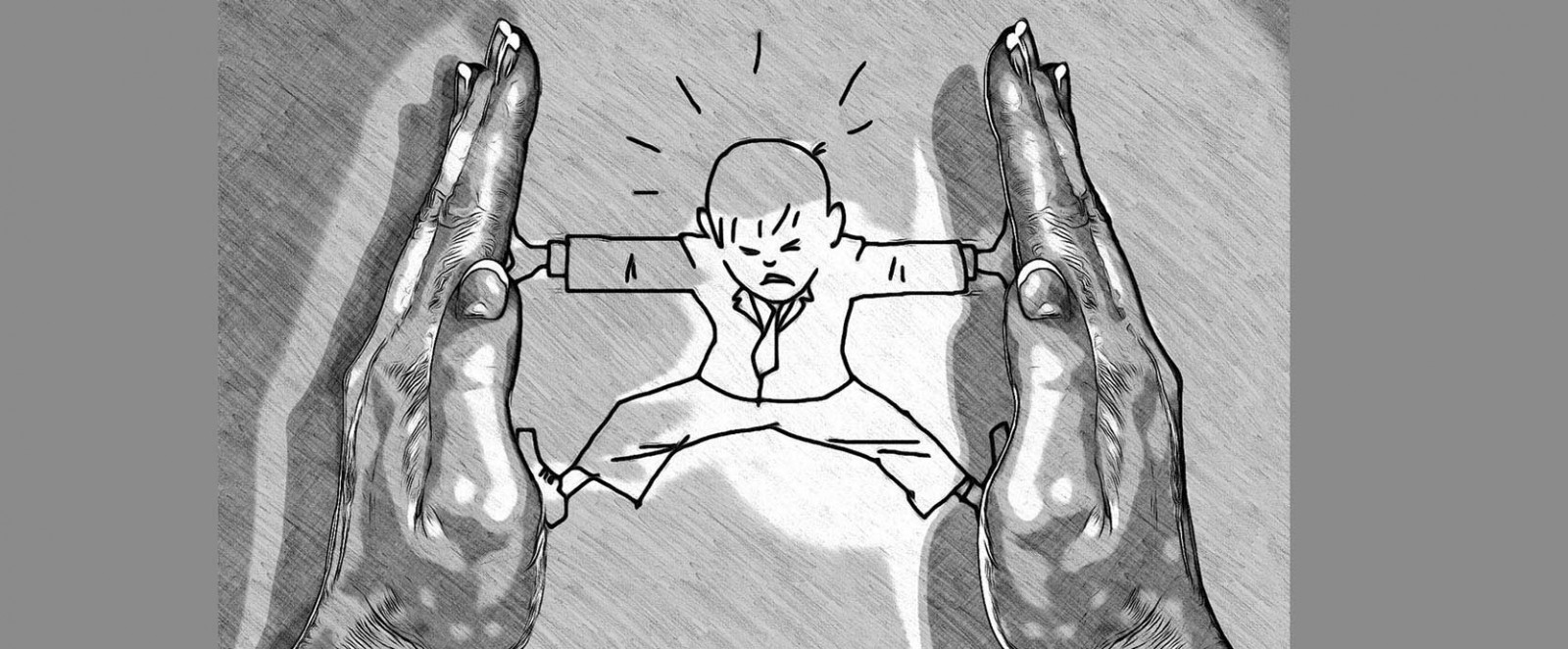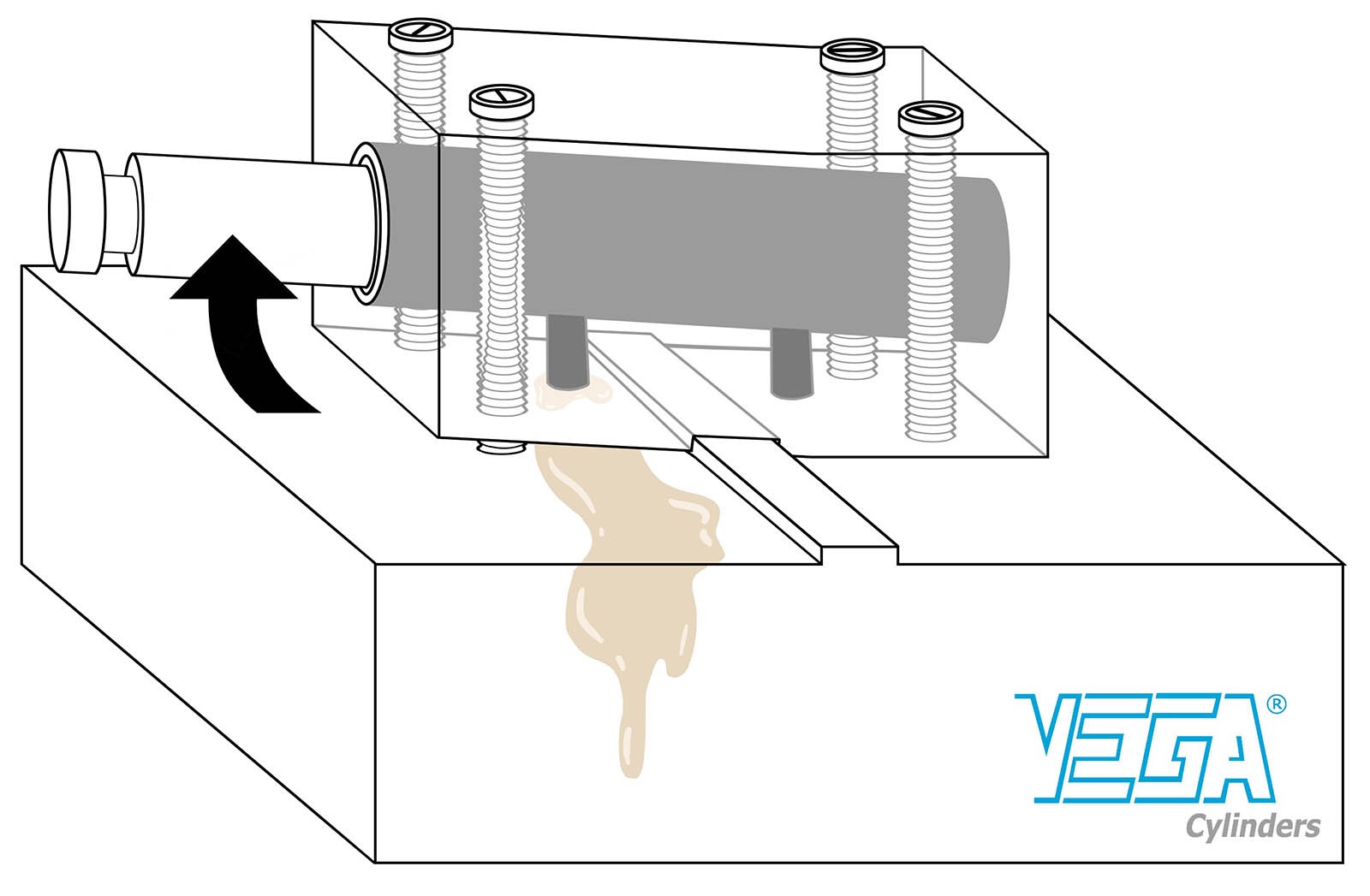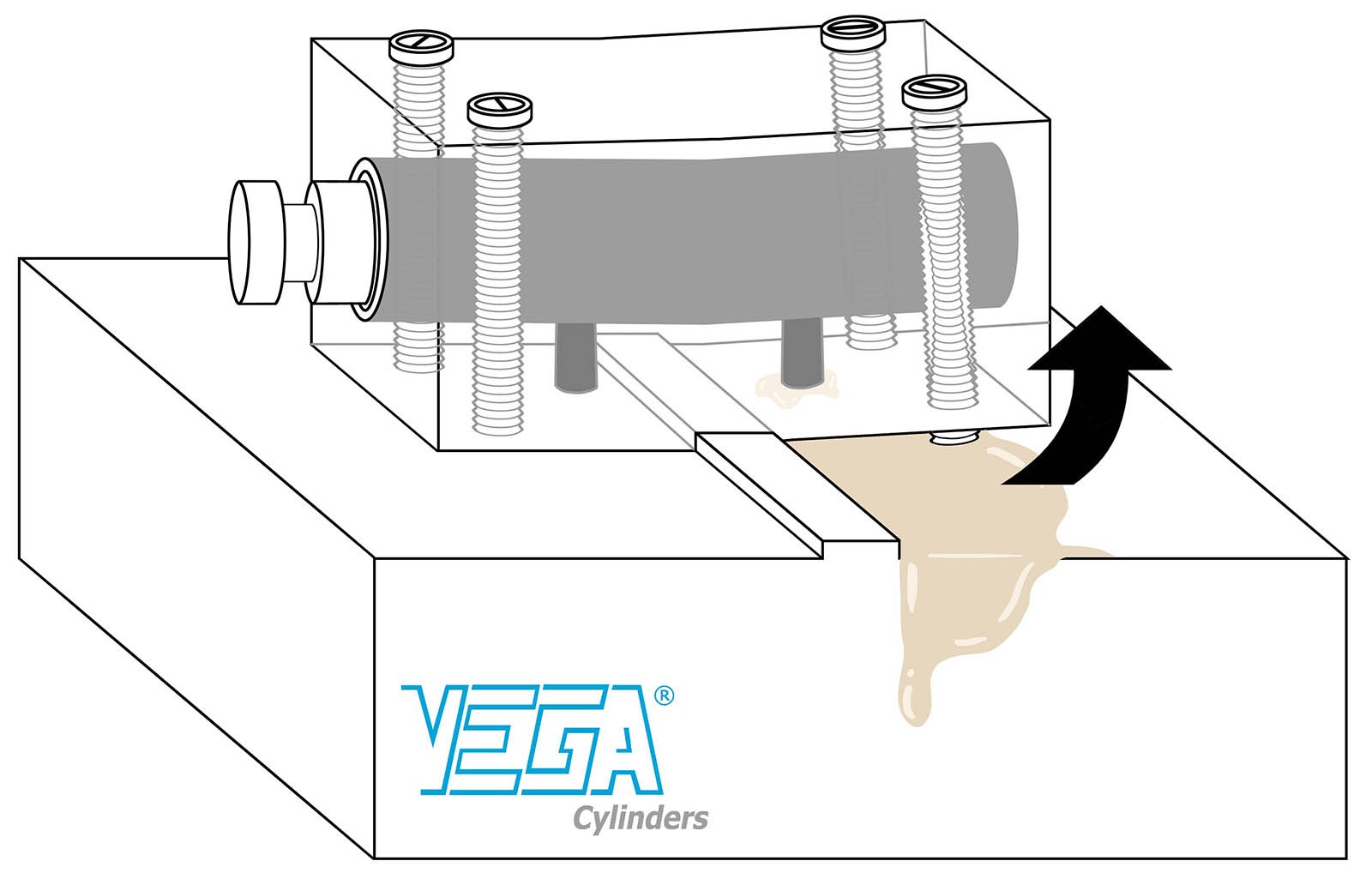Sometime ago I received this question from one of Vega’s distributor and at first I thought it was an easy answer, but then I realised that others also were not aware of this small but important detail.
Let’s start with an example, lets consider now the VEGA V450CM block or compact cylinder and on its catalogue at page M4 there is a chart (here is the link to V450CM catalogue).
This chart is made up of 3 columns: starting from left, we have Bore Size, Max Working Oil Pressure for Manifold Delivery Ports, Max Working Oil Pressure for standard Threaded Ports.
From Bore 16 to 50, the corresponding Oil Pressure values are constant and equal. But from Bore 63 and upward, Oil Pressure values are decreasing.
Why does this occur?
Some might think that Vega cylinder’s bodies or pistons are built using low quality steel, and therefore are not strong enough to withstand the force generated by the oil pressure. Obviously it is not like that! In reality, there is more than enough high quality materials to meet the required pressures…
There are 2 different reasons, one for each Oil Port Set Type. The first involves the Manifold Oil Ports. For fixing the compact cylinder, 2 or 4 radial through holes are drilled in the cylinder body, and a keyway is placed in contact with the mold plate. Oil is delivered to the cylinder through 2 direct holes from the mold plate. Between the 2 surfaces and the 4 delivery oil holes, there are 2 O-rings, placed in the proper location for preventing any leakage.
When the cylinder operates, it generates pushing/pulling forces, aligned with the rod.
As the fixing surface is offset from such rod, a bending movement is generated, and it will stress the fixing screws, cylinder body and mold plate.
To be on the safe side (even if the cylinder doesn’t deflect significantly), we prefer to reduce the admissible working pressure. Please also note that most of the pumps in molding machines only reach 160/180 bars max, and that we don’t know how stiff the part is where the cylinder would be connected.
The second reason linked with the Threaded Oil Ports, involves the resistance of the rod during the pushing/pulling movement. As we know the rod is normally connected to the mold core using a male/female threaded surface. Even though the rod is sturdily constructed using special alloy steel with surface hardening HV0.5 higher than 700, and tensile strength ~ 100÷120 daN/mm2, the relatively small size of the rod diameter causes this side-effect (that is, Oil Pressure must be reduced a bit). On the other hand, Vega’s Compact Cylinders offer an advantage when Pulling, a smaller rod size lets the piston have a larger surface, so that oil pressure generates an EXTRA boost. Is this important? Of course it is, even though many times mold makers do not consider the plastic shrinkage rate once the molded part is solidified. Pulling force is very important in Injection Molding and Vega’s Compact or Block Cylinders are built to give more force than others. This (depending on the application), may result in a cylinder smaller than other brands.





